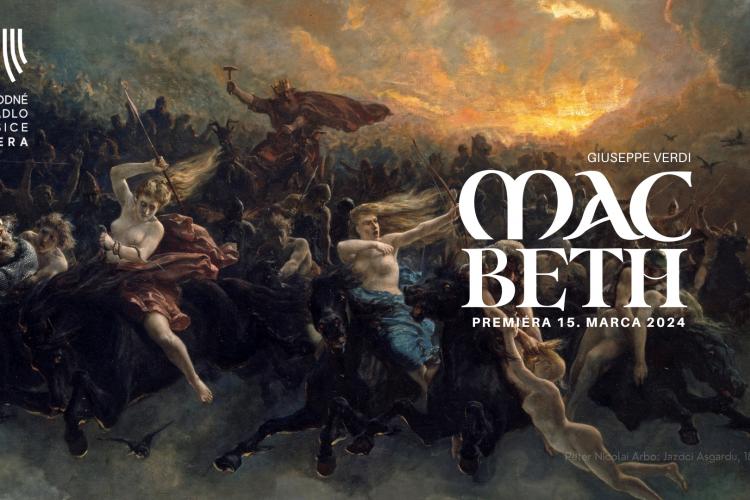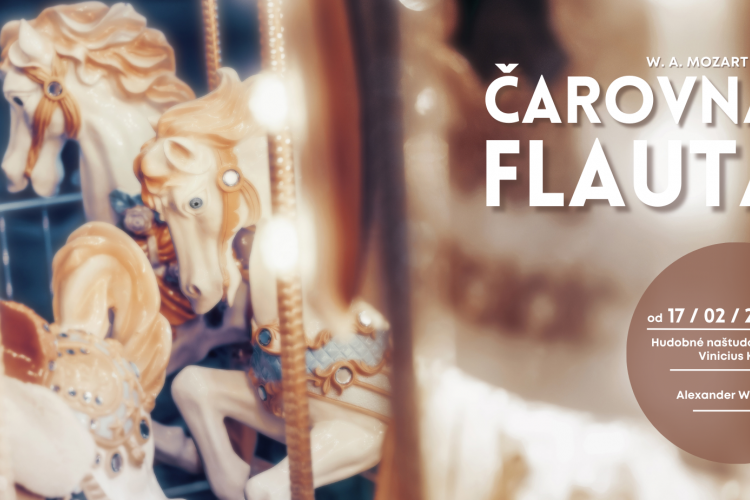"Košice gave a lesson of belcanto,"wrote opera critic Pavel Unger in his review in operaslovakia.sk, on May premiere of the adaptation of Donizetti’s opera Roberto Devereux. Live premieres are ahead soon, on Thursday, September 30 and Friday, October 1. The theatre brings the first scenic performance of the opera in Slovakia. What is the story of the opera?
The Queen Elizabeth I (1533 - 1603) of the Tudors was daughter of well-known Henry VIII and his second wife Anne Boleyn. She ruled in England from 1558 until her death. Over her reign she brought precious stability and prosperity to a poor country shaken by wars, religious disputes, and power struggles. She created literally a world power. Establishing a secure Church of England (Protestant Church), defeating strong and invasive Spanish Armada or conquering seas systematically are, amongst others, her most significant achievements. Crafts, trade, education, culture, and especially music flourished under Elizabeth’s reign (William Byrd, Thomas Morley, John Dowland, John Taverner, Thomas Tallis, John Bull). Literature and theatres thrived (William Shakespeare, Christopher Marlowe). More than forty years of her rule were so unique in British and European history that these times are called Elizabethan Ageor sometimes Golden Age. Remarkably this most powerful woman of the then world, and great marriage prospect for kings and princes from all over the Europe, chose not to marry and refused all marriage proposals. She opted not to marry because she did not want to be a weak woman of a man who would make decision instead of her. She herself claimed, she did not want to marry her country with another country. She married England...
So, it is little surprise that the life story of this strong, charismatic ruler, her secret emotions and hidden love life (in addition to Roberto Devereux, the list of her lovers include also Robert Dudley, Duke of Leicester, pirate Walter Raleigh, conqueror of Northern America who named one of settled states Virginia (virgin land) in honour of the queen or another pirate Francis Drake whose fleet defeated Spanish Armada) inspired many writers, playwrights (such as Walter Scott, Friedrich Schiller, and Victor Hugo), and musicians (Gioacchino Rossini, Gaetano Gioia, Daniel Francois Auber, Saverio Mercadante), just as filmmakers who appeared with new media in the past century.
In opera world, it was surely Gaetano Donizetti who got inspired by her the most. He tried to make musical and dramatic portray of Elizabeth I in three works. The first one Elisabetta al castello di Kenilworth of 1829 depicts the queen as a woman generously forgiving to her lover, Duke of Leicester, his secret marriage. In his second work – a tragic opera Maria Stuarda (1835), Donizetti confronts Elizabeth with her political rival ‒ arrested (and eventually executed) Scottish Queen Maria Stuart. In the third work Roberto Devereux ossia Il conte d´Essex, Donizetti presents the portrait of aging, proud, and jealous Queen Elizabeth suffering from betrayal of her last lover and her decision to deliver him for execution.
The musical work presenting a fictitious romantic story set in partially real period circumstances, was written in 1837. It the third piece completing a three-part cycle of Donizetti’s operas inspired by the life stories of British (Tudor) queens – Anne Boleyn, Maria Stuart, and Elizabeth I. Libretto was written by his seasoned fellow colleague Salvadore Cammarano based on the dramaby Francois Ancelot Elisabeth d´Angleterre (1829), and it also includes some fragments from Histoire secréte des amours d´Élisabeth et du comte d´Essex (1787) by Jacque Lescéne des Maisons. Donizetti signed contract for the opera in spring 1837, however, making of the new piece was overshadowed by the composer’s life crisis. After he lost both his parents, in the previous year, he loses another child at childbirth in June 1837,moreover on 30 July he loses his wife Virginia who is 28. Opera rehearsals were planned from late August, so he had to finish the remaining part of sheet music immediately after Virginia’s death. After all, the whole rehearsal process is postponed anyway due to raging epidemy of Cholera. However, the world premiere of the opera Roberto Devereux was held on 28 October 1837 in famous Neapolitan theatre Teatro di San Carlo. The character of Elizabeth was performed by excellent Giuseppina Ronzi de Begnis. Donizetti then created, especially for her, other title characters in Fausta, Sancia di Castiglia, Maria Stuarda, andGemma di Vergy. Roberto was portrayed by Giovanni Basadonna, Sara was done by Almerinda Manzocchi Granchi, and Nottingham was done by French barytonPaul-Bernard Barroilhet. The opera was a huge success, Roberto is performed by leading European opera houses. The premiere in Paris (27 December 1838) is worth special note, as Donizetti added a long foreplay to the opera, citing English national anthem God Save the Queen. Other significant presentations of the opera were in London (1841), New York (1849), Rome (1849), and Palermo (1849).
In 1882, the opera unfortunately disappears from the repertoire, just like most of pre-Verdian bel canto opuses. The opera did not appear on stage until 1964.Symbolically, again on stage of Neapolitan Teatro di San Carla, Elizabeth was interpreted by Leyly Gencer. Between 1965 – 1978, both concert and stage versions were presented by Montserrat Caballé. In October 1970, the first part of the trilogy of Tudor Queens is repeatedly released in New York, the leading characters were done by Beverly Sills and Plácido Domingo. In the next decades, Roberto becomes increasingly presented at world scenes, it even ranks in top ten Donizetti’s pieces though interpretation demands imposed on the four leading characters, and especially Queen Elizabeth’s part, are extreme. In the new millennium, however, we see a brilliant interpretation of the role by soprano stars such as Mariella Devia, Sondra Radvanovsky orour Edita Gruberová, for whom it was the role of her lifetime where she ended her long and great artistic career at the Bavarian State Opera in Munich...
Peter Hochel






